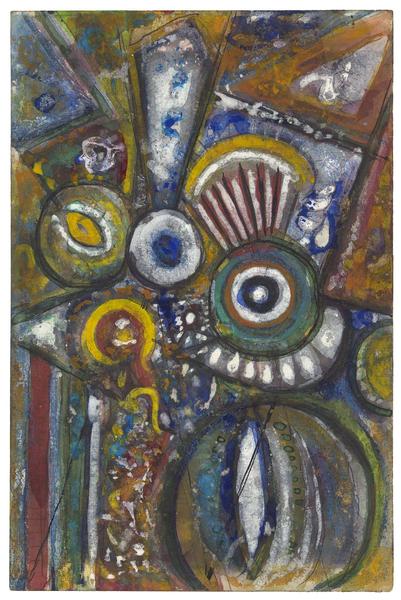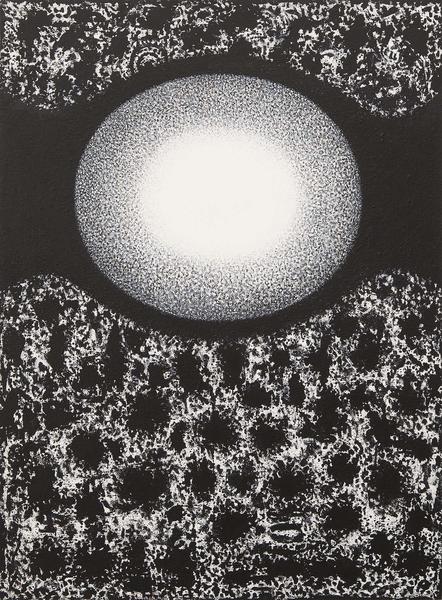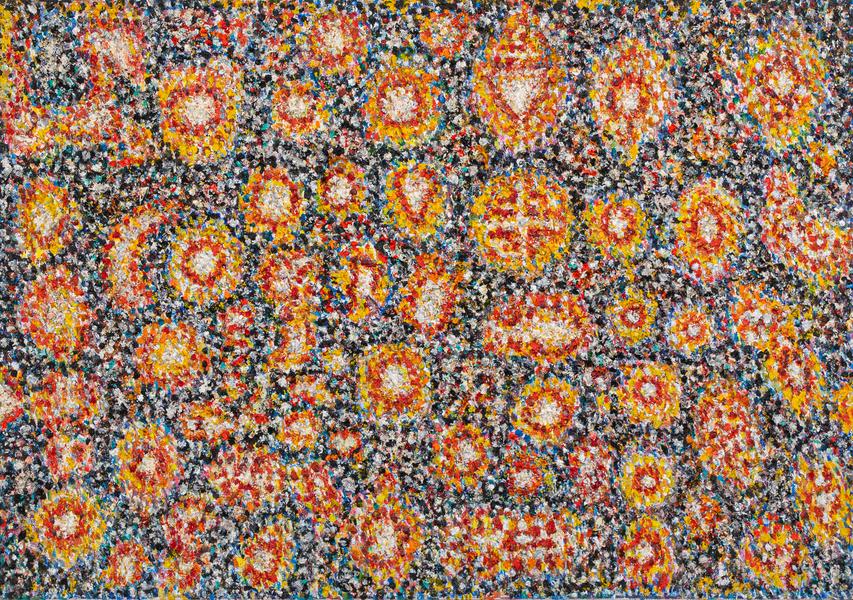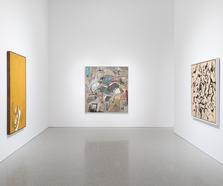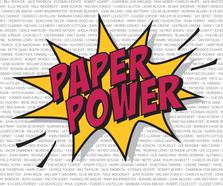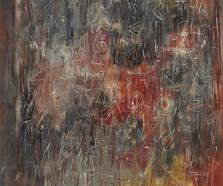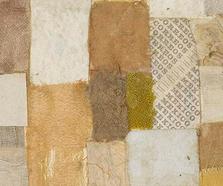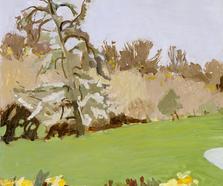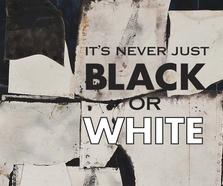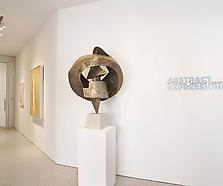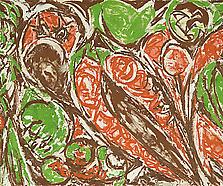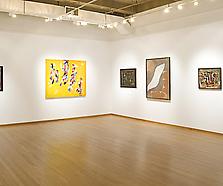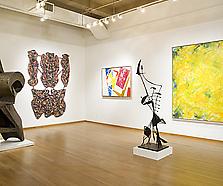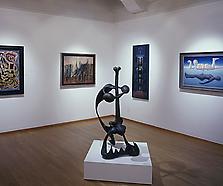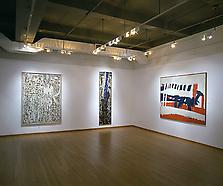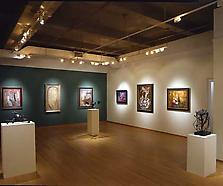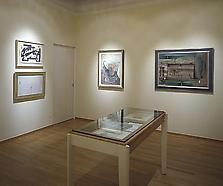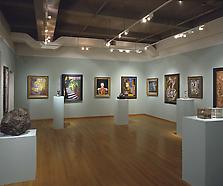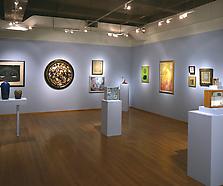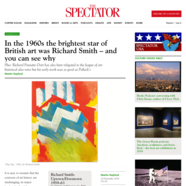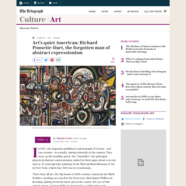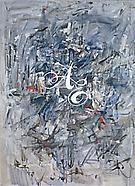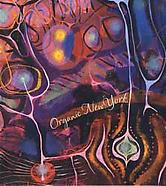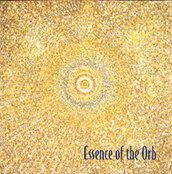“A work of art for me is a window, a touchstone, or a doorway to every other human being…it is my contact and union with the universe.”[1]
One of the younger members of the New York School painters, Richard Pousette-Dart is also credited with having produced the group’s first large-scale abstract painting, Symphony No. 1: The Transcendental, which he created from 1941 to 1942.[2] This precocious artist, who received little formal training, was born in 1916 in St. Paul, Minnesota and raised in Valhalla, New York by parents who nurtured and supported his interests in the arts. His father, Nathaniel Pousette, was an art critic and artist who believed in the intuitiveness of all creativity. His mother, Flora Louise Dart, was a poet and musician who sought out the relationship between different art forms. His parents combined their names when they got married. Pousette-Dart grew up surrounded by books and his father’s art collection, which included works from Africa, the South Pacific, and the Americas. He attended Bard College briefly, but dropped out in 1936 and moved to New York City to become a full-time artist. In the late 1930s, Pousette-Dart began sculpting in stone and working with brass. He also served as an assistant to sculptor Paul Manship (most famous for Rockefeller Center’s Prometheus). By 1941, he had his first solo exhibition—a group of paintings featuring shapes of color and light encased in black paint—at the Artist’s Gallery, a non-profit exhibition space sponsored by Josef Hoffman and Meyer Shapiro, among others.
In the 1940s, Pousette-Dart exhibited at the Willard Gallery, Betty Parsons Gallery, and Peggy Guggenheim’s Art of This Century, and his work was included in several of the important group shows that shaped the parameters of abstract expressionism and defined American modernism. In 1944, he exhibited in Howard Putzel’s famous Forty American Moderns exhibition at 67 Gallery—which also featured works by Stuart Davis, Adolph Gottlieb, Morris Graves, Hans Hofmann, Robert Motherwell, Jackson Pollock, and Mark Tobey—and Peggy Guggenheim’s Spring Salon for Young Artists. In 1945, his work appeared at Putzel’s gallery again, alongside that of Arshile Gorky, Gottlieb, Krasner, Pollock, and Mark Rothko, in the exhibition A Problem for Critics. Pousette-Dart was a member of the Club, frequented Studio 35 and the Cedar Bar, and in 1951, he became one of the “Irascibles” pictured in Life Magazine. That same year, he and his wife left New York City for a more contemplative life upstate. In 1958, they moved again, to Suffern, New York.
Although Pousette-Dart chose to live away from New York City, he did not withdraw from the city’s art scene entirely. He taught at the New School for Social Research, the School of Visual Arts, Columbia University, and the Art Students League. In 1959, Pousette-Dart received a grant from the Ford Foundation. In 1961, he was awarded the MV Kohnstamm Prize at the 64th Annual American Painting and Sculpture Exhibition of the Art Institute of Chicago for his work Shadow of the Unknown Bird (1955-1958). That same year, Pousette-Dart’s work traveled to Brazil, to the sixth Bienal do Museu de Arte Moderna in São Paulo. In 1963, the Whitney organized a mid-career retrospective; in 1969, MoMA organized a traveling exhibition of his work; and in 1973, the Whitney mounted a smaller show of more recent paintings. It would be the last major New York exhibition of his work in his lifetime.
Despite Pousette-Dart’s considerable talent, the idiosyncratic nature of his paintings contributed to his marginalization. Influenced by surrealism, the studies of Freud and Jung, African art, and Pacific Northwest Native American art, Pousette-Dart pursued the transcendental not only in abstract forms, but also in the very way in which he applied paint. In his textured works, thick impasto and solid brushstrokes shimmer with light and color, conveying his belief that “the spiritual doesn’t have to do with the lack of the material . . . if there is a heaven, it is the wonderful working of this world.”[3] While he believed that all art was abstract to some degree, he preferred to call his paintings “presences” and “implosions of color” rather than abstractions. A 1997 survey of his career at the Metropolitan Museum of Art, organized by Lowery Stokes Sims and accompanied by a catalogue, sparked a resurgent scholarly and public interest in his art. Since then, several museums have mounted solo exhibitions including the Los Angeles County Museum of Art (2006), Guggenheim Collection in Venice, Italy (2007), and Phillips Collection in Washington, DC (2010).
[1] Michael Klein, “Interior Light: Richard Pousette-Dart,” 1997 Features Archives, artnet.com. http://www.artnet.com/magazine_pre2000/features/klein/klein12-10-97.asp (accessed July 2009).
[2] Hilton Kramer, “Young Pousette-Dart, A Precocious Master, Stood on Frontier,” New York Observer, October 5, 2003. http://www.observer.com/node/48148 (accessed February 2009).
[3] Richard Pousette-Dart, personal communication with Jackson Rushing, February 17, 1986. Quoted in Rushing, “Review: Pousette-Dart’s Spirit-Object,” Art Journal vol. 50, no. 2 (Summer, 1991), 73.


